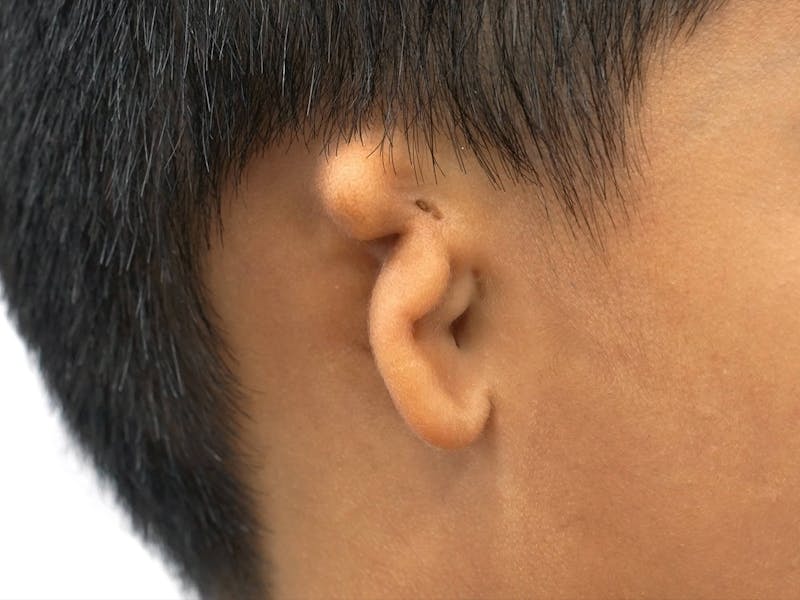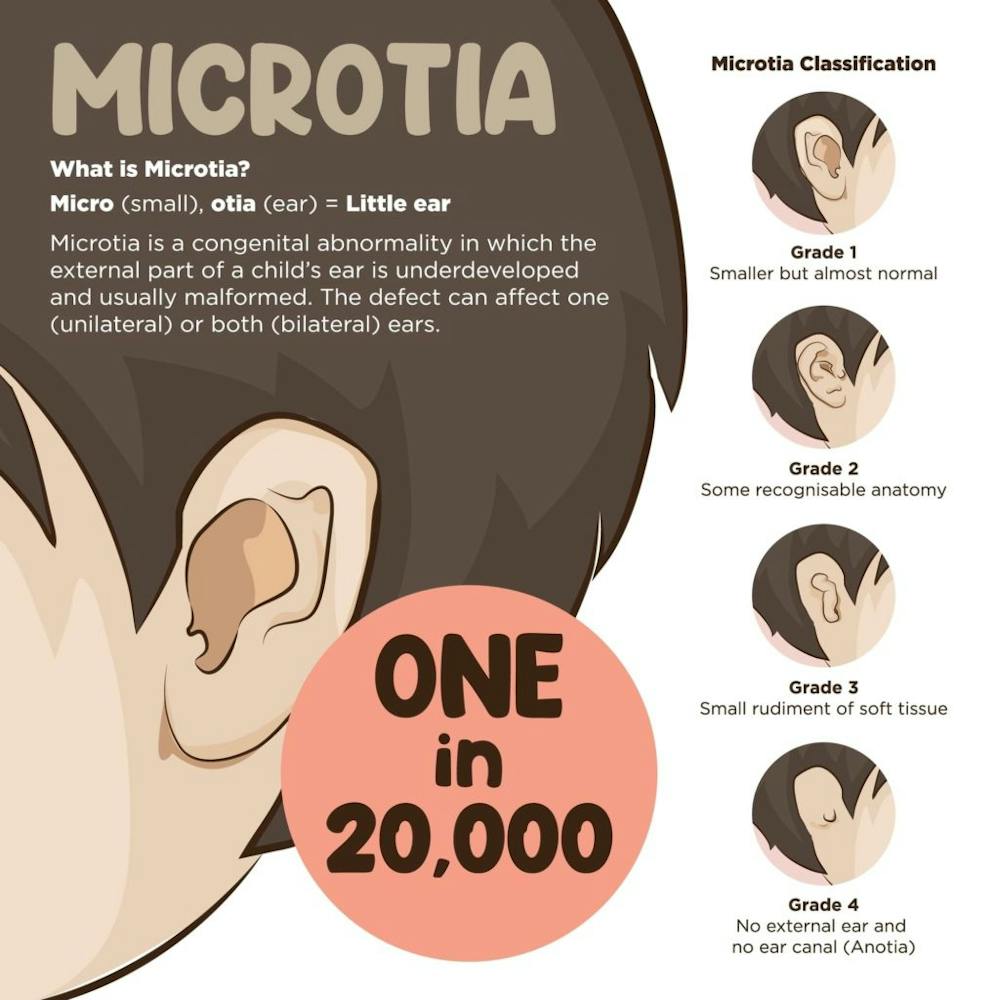
Microtia is a congenital condition of deformity that affects the external ear canal. Microtia Grading can range from mild to severe and is classified into grades based on its severity. Isolated microtia, which is the most common form, is graded on a scale of 1-4, with grade 4 being the most severe form. Patients with microtia may require treatment options such as reconstructive surgery or prosthetic ears in order to improve their appearance and hearing. Depending on the grade of microtia, there are different treatments for each patient in order to achieve the best outcome possible.
Identifying Different Grades of Microtia
The first step in determining the grade of microtia is to identify the form of microtia. Isolated microtia is the most common form and is classified into four grades, with grade 4 being the most severe. Grade 1 involves a small ear canal and mild hearing loss, while grade 2 involves more severe hearing loss and an absent eardrum. Grade 3 includes a missing ear canal (aural atresia) and complete hearing loss, while grade 4 includes a completely absent external ear structure.
The next step in determining the grade of microtia is to assess the level of hearing loss associated with it. Patients with isolated microtia typically have some degree of hearing loss, ranging from mild to profound depending on their grade. Grade 1 patients may experience only mild hearing loss, while those with higher grades may experience complete deafness in one or both ears.
Finally, other factors such as congenital abnormalities or other medical conditions should also be taken into consideration when assessing the severity of microtia. For example, if a patient has additional congenital abnormalities such as cleft lip or palate, this could affect their ability to hear and should be taken into account when determining the grade of microtia.

Graduating the Severity of External Ear Deformities
Graduating the severity of external ear deformities is an important step in determining the grade of microtia. The risk for microtia can be determined by assessing the size and shape of the ear canal, as well as any other abnormalities present. A narrow ear canal or a lack of rib cartilage can indicate a higher risk for microtia. Additionally, examining the shape and size of Microtia ears can help to determine if there is an abnormality present.
Using Hearing Tests to Determine Microtia Grading:
Hearing tests are an important tool in determining the grade of microtia. These tests measure the frequency of sound that can be heard by each ear and are especially important for children with unilateral or bilateral microtia. Additionally, doctors may also examine the auditory canal in order to assess any abnormalities present. This is especially important for patients with higher grades of microtia who may experience complete deafness in one or both ears. By assessing these factors, doctors can provide comprehensive treatment options tailored to each patient’s individual needs and ensure that they receive the best possible outcome.
Audiometric tests accurately determine the severity of hearing loss related to microtia. These tests measure how well a person can hear different frequencies and tones at different levels of loudness. The results from these tests help doctors determine if a patient has mild, moderate, or severe hearing loss associated with their microtia condition. Additionally, audiometric testing can help identify any other medical conditions that may be affecting the hearing ability such as cleft lip or palate which could require additional medical care.
Using CT Scans for Diagnosing Grade of Microtia
CT scans are an important tool for diagnosing the grade of microtia. These scans provide detailed images of the ear and surrounding structures, allowing doctors to accurately assess any abnormalities present. CT scans help to measure the size and shape of the external ear, as well as any other deformities that may be present. By using CT scans, doctors can accurately determine the severity of a patient’s microtia condition and provide appropriate treatment options tailored to their individual needs.
CT scans are also useful in determining if there is a narrowing or blockage in the auditory canal which could indicate a higher risk for conductive hearing loss associated with microtia. Additionally, these scans can help identify any other abnormalities that may be contributing to hearing loss such as fluid buildup or infection in the middle ear.
The Impact of Microtia Grading on Treatment and Outcome
Depending on the severity of the deformity, your doctor will recommend different microtia treatment options in order to achieve the best outcome possible. For mild cases of microtia, reconstructive surgery or prosthetic ears improve appearance and hearing. For more severe cases, your healthcare provider may recommend more invasive treatments such as bone-anchored hearing aids or cochlear implants in order to restore hearing. Microtia Los Angeles patients with higher grades of microtia may require additional medical care due to associated conditions such as cleft lip or palate. Ultimately, accurately assessing the grade of microtia is essential in determining the best course of action for each patient in order to achieve optimal results and increase the quality of life.
Conclusion: How Is Microtia Grading Determined?
In conclusion, your doctor can establish microtia grading by assessing the form of microtia, the level of hearing loss associated with it, and any other medical conditions that may affect hearing. Depending on the severity of microtia, your health provider may recommend different treatment options in order to achieve the best outcome possible.
Schedule a consultation
If your child has microtia or another ear deformity, then board-certified facial plastic surgeon Dr. Panossian may be able to help. Schedule an ear reconstruction consultation at our Pasadena office to learn more about the current treatment options and your child’s candidacy. Call 626-765-6885 today to make an appointment with our welcoming staff.


